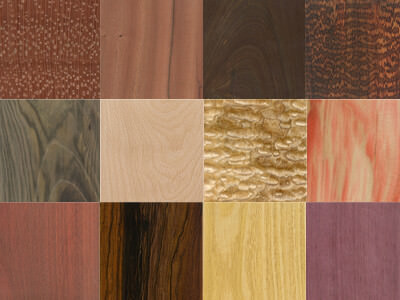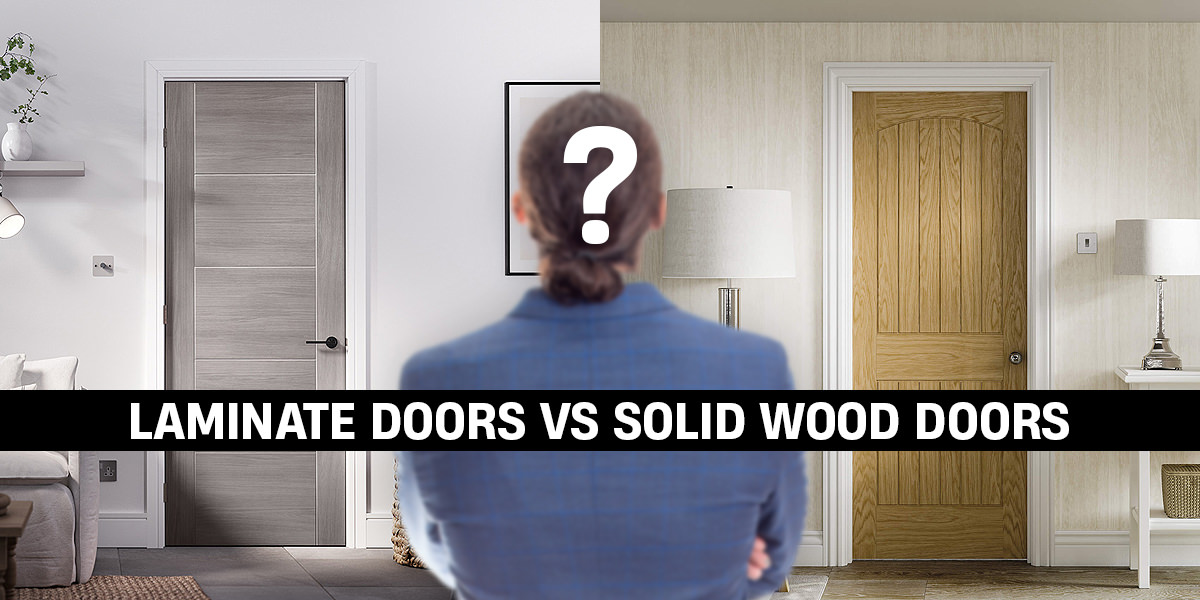
Introduction: Why Internal Laminate Doors and Solid Wood Doors Are Popular
When it comes to choosing doors for your interiors, internal laminate doors and solid wood doors are two of the most popular options. Both offer a unique blend of style, functionality, and durability, making them ideal for homes, offices, and commercial spaces.
This guide will take you through the features, types, and key considerations of both options to help you decide which one best suits your needs.
Understanding Internal Laminate Doors and Solid Wood Doors
What Are Internal Laminate Doors and Solid Wood Doors?
Internal laminate doors are made by layering a synthetic laminate finish over a composite core. The result is a door that is lightweight, durable, and consistent in its finish. These doors are loved for their versatility, offering a wide range of colours and textures to suit modern interiors.
Solid wood doors, on the other hand, are crafted entirely from natural timber, and are prized for their strength and natural beauty. With deep grains and rich tones, they add warmth and character to any space.
Common Materials
Laminate doors are constructed with MDF (medium-density fibreboard) or particleboard as the core. The surface is then finished with a high-pressure or low-pressure laminate layer. High-pressure laminates are particularly durable and suitable for areas with heavy use, while low-pressure laminates offer a budget-friendly alternative for quieter spaces.
Solid wood doors are crafted from hardwoods such as oak, mahogany, and walnut or softwoods like pine and redwood. Hardwoods are denser and provide long-lasting strength and resistance to wear, while softwoods are lighter and easier to customise. These doors can be unfinished for personalisation or pre-finished for quick installation.
Types of Internal Laminate Doors and Solid Wood Doors
Internal Laminate Doors vs. Solid Wood Doors
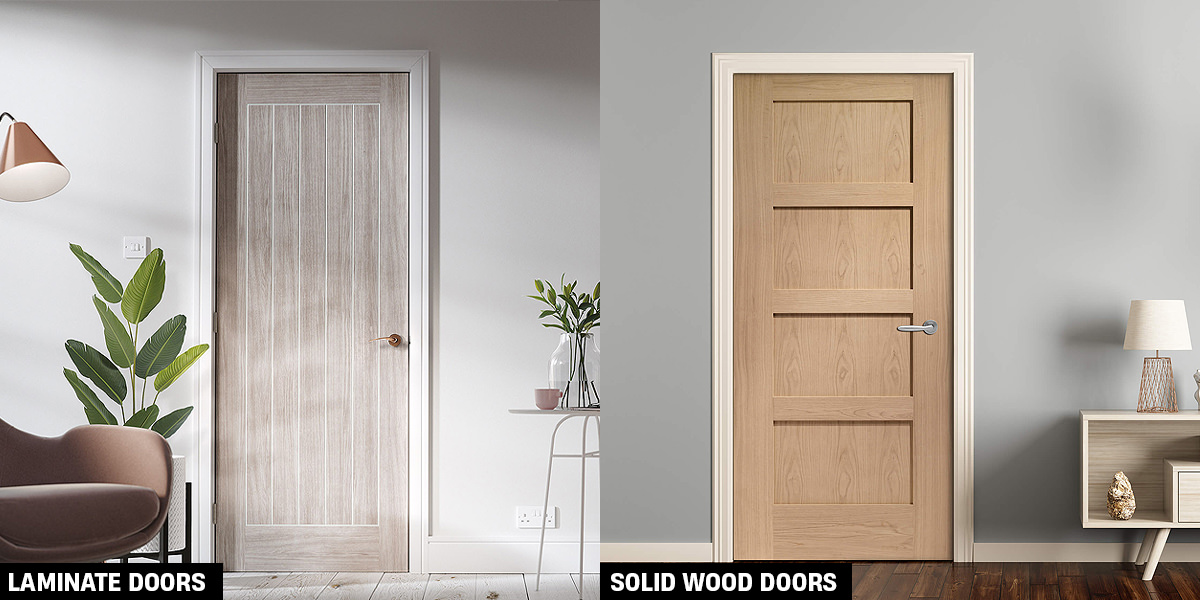
Both types of doors serve similar purposes but differ in several key ways.
Laminate doors are lightweight, cost-effective, and designed for modern living. Their synthetic finish is resistant to scratches, dents, and moisture, making them ideal for busy homes and offices.
Solid wood doors are heavier and more durable. They add natural warmth and beauty to interiors but require regular maintenance to keep them looking their best.
Panelled Doors
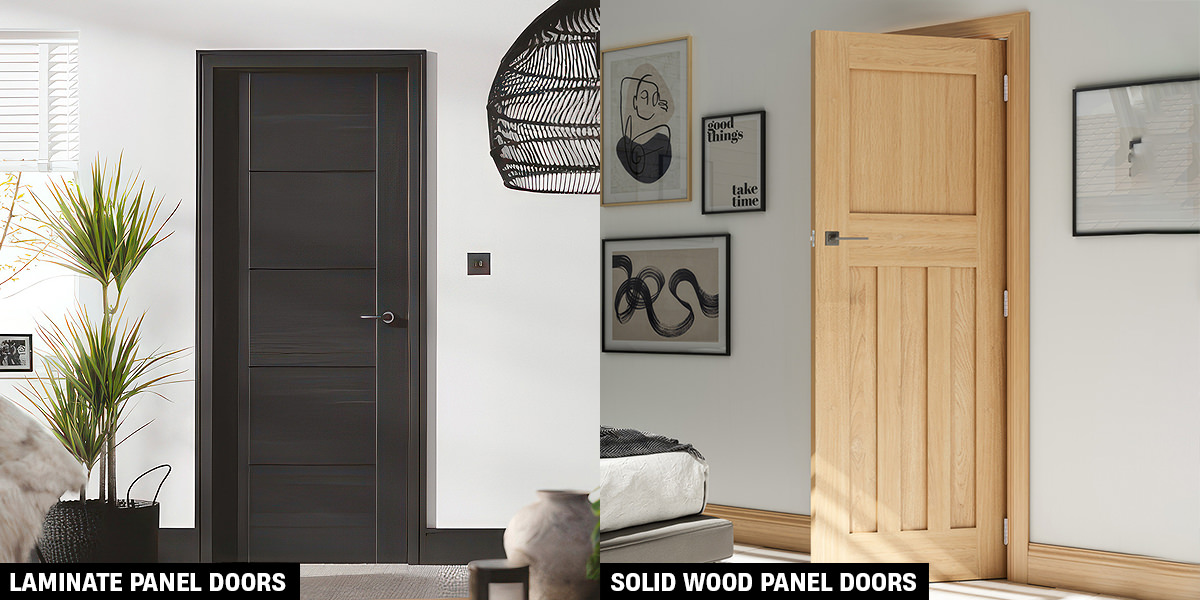
Laminate panelled doors replicate the look of natural wood panels while offering a smooth, uniform finish that is easy to clean and maintain. They bring a refined, textured look without the higher cost or upkeep of solid wood.
Solid wood panelled doors feature natural grains and depth, adding character and elegance to a room. Their sturdy build makes them a timeless addition to interiors, especially in period properties or formal spaces.
Flush Doors
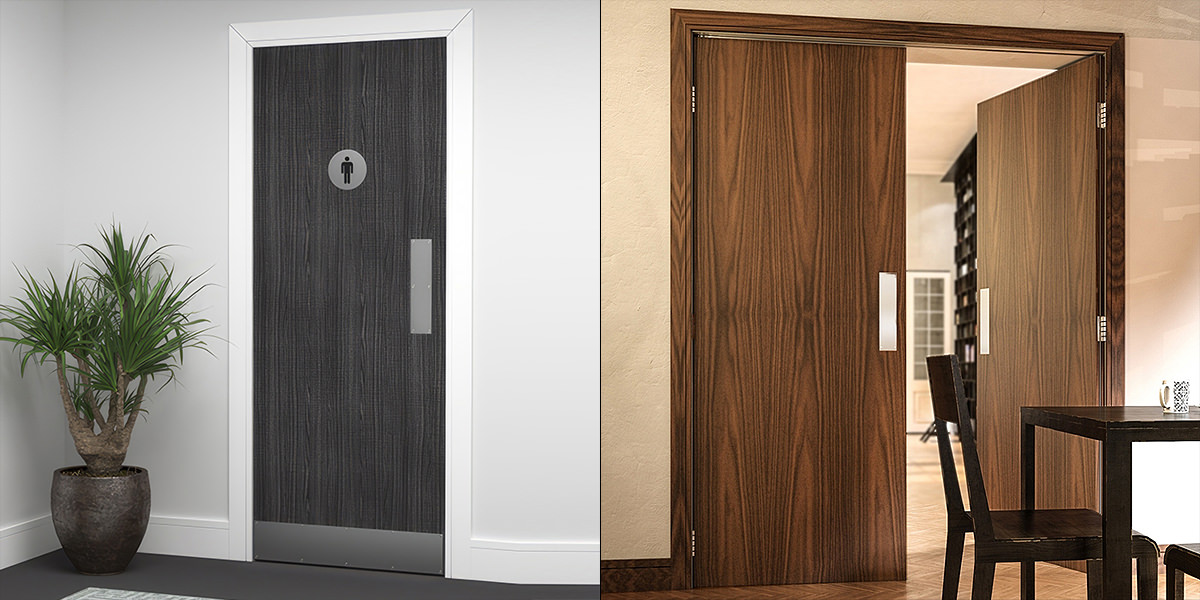
Laminate flush doors have a clean, minimalist appearance that works well in modern homes or office spaces. Their scratch-resistant and moisture-resistant surfaces ensure they remain practical and low maintenance.
Solid wood flush doors provide the same sleek look but with the added richness of natural wood. They are a great choice for spaces where durability and a premium finish are essential.
Glazed Doors
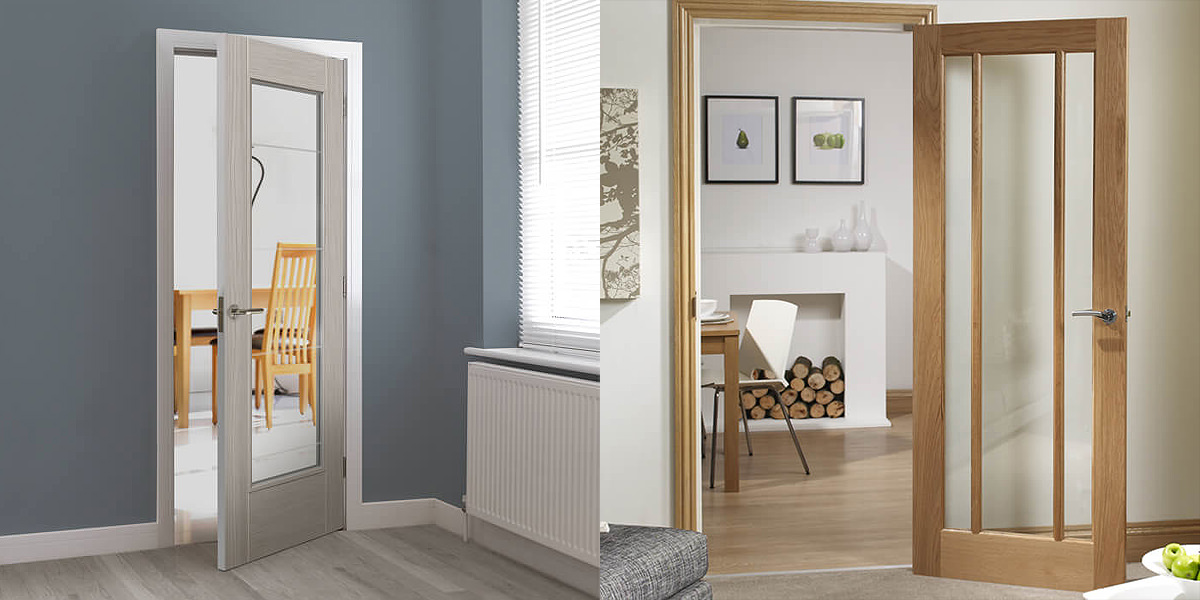
Laminate glazed doors are lightweight and feature glass framed with durable laminate, making them a cost-effective option for homes that need extra light. Frosted or decorative glass panels can add a modern touch while ensuring privacy where needed.
Solid wood glazed doors combine the charm of timber with high-quality glass, creating a more premium and stylish appearance. These doors are perfect for formal living spaces, dining rooms, or offices that benefit from natural light while maintaining a high-end look.
Classic Door Styles
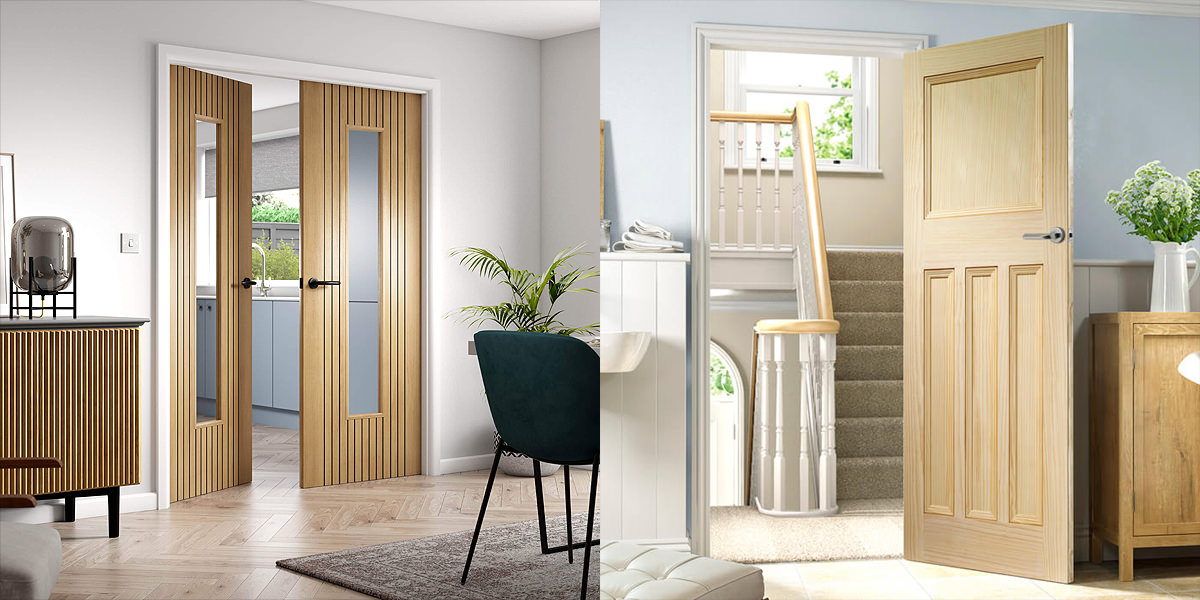
Classic styles focus on panelled designs and traditional detailing that never go out of fashion.
Laminate doors often mimic the look of natural wood, offering a consistent finish with minimal upkeep. They are a practical alternative for those who want a timeless look without the higher cost of solid wood.
Solid wood doors, with their rich grains and handcrafted designs, remain the gold standard for classic interiors. They bring warmth and sophistication, making them ideal for heritage homes and formal settings.
Modern Innovations
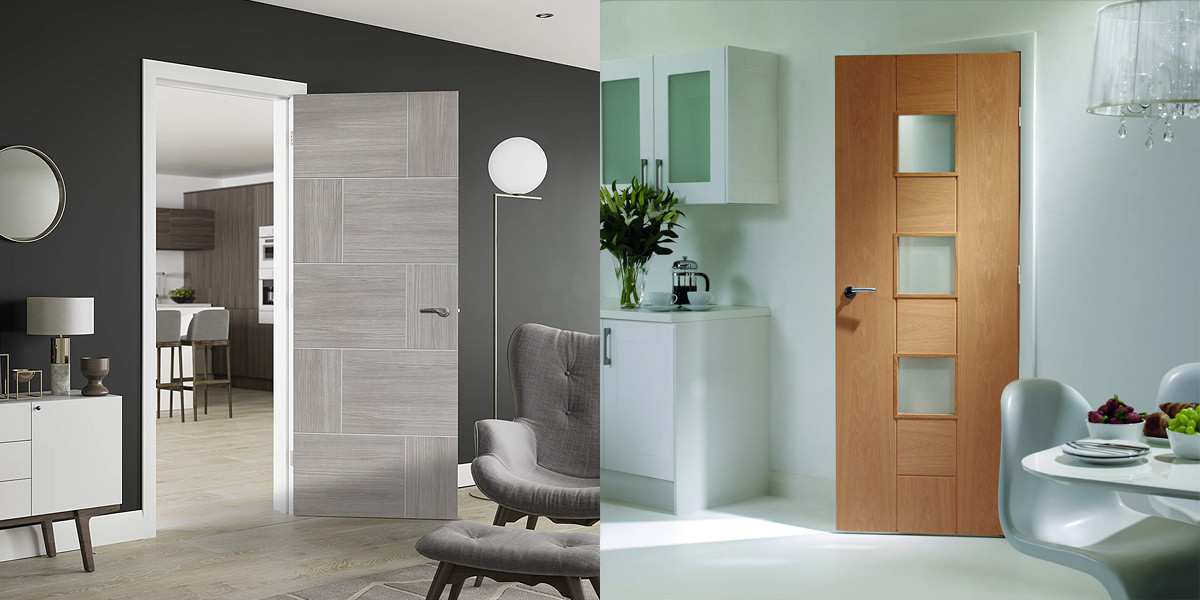
Modern designs bring fresh style and functionality to laminate and solid wood doors.
Laminate doors now feature textured finishes, bold colours, and minimalist frames, making them perfect for contemporary spaces. Innovations like concealed hinges and pre-finished surfaces make installation quick and seamless.
Solid wood doors have also evolved, with slimmer profiles, modern panels, and engineered cores that improve stability and insulation. Frosted or clear glazing adds a sleek, updated look to solid wood doors without sacrificing their traditional charm.
Internal Laminate Door and Solid Wood Door Buying Guide
Key Factors to Consider
When choosing between laminate and solid wood doors, consider where the door will be used and your priorities.
The former is better suited for areas that see high traffic or require minimal upkeep, such as bedrooms, offices, or living spaces. They are affordable and practical, offering a clean, modern finish.
While the latter is ideal for feature areas where durability and visual impact are more important. They bring long-term value but require regular maintenance to preserve their natural beauty.
Cost Comparison by Material and Style
The cost difference between these doors can be significant.
Laminate doors are the more affordable option, particularly flush or panelled designs, which are budget-friendly and stylish.
Solid wood doors, while more expensive, offer superior strength and aesthetic appeal. Panelled or glazed solid wood doors with premium finishes cost more but provide lasting value and durability.
Maintenance Tips for Internal Laminate Doors and Solid Wood Doors
Cleaning and Care
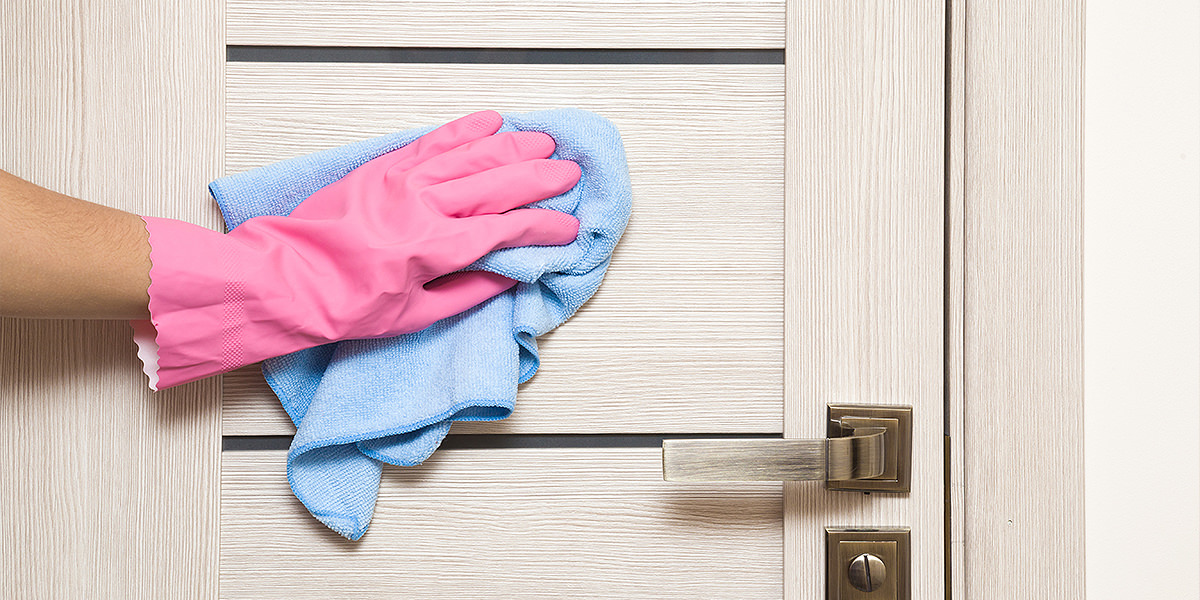
Cleaning laminate doors is simple and requires very little effort. A damp cloth and mild, soapy water are usually enough to keep them looking fresh. Avoid abrasive cleaners, as they can damage the surface.
Solid wood doors need a bit more attention. Regular dusting and occasional polishing help preserve their natural finish and keep the wood grain looking its best.
Handling Wear and Tear
Laminate doors are designed to resist scratches, dents, and daily wear, making them ideal for homes with children or pets. Minor scuffs can be easily repaired with a laminate repair kit.
Solid wood doors, while sturdier, may show wear over time. Scratches or dents can often be sanded down and refinished, restoring the door to its original look.
Energy Efficiency and Sustainability
Solid wood doors offer excellent natural insulation due to their dense construction, helping to maintain room temperatures and reduce energy loss. Laminate doors, while lighter, provide reasonable insulation with their engineered cores and resist warping over time.
From a sustainability perspective, responsibly sourced solid wood is eco-friendly, while laminate doors often use recycled wood fibres, reducing waste. Both options are durable, minimising the need for replacements and lowering their environmental impact.
Conclusion: Finding the Perfect Internal Laminate Door or Solid Wood Door
Internal laminate doors and solid wood doors bring unique advantages to your interiors. Laminate doors are cost-effective, durable, and perfect for modern spaces that need easy maintenance. On the other hand, solid wood doors provide timeless beauty, exceptional durability, and a premium finish that adds character to any room.
Whether updating your interiors or looking for doors that will stand the test of time, laminate and solid wood doors offer stylish solutions to meet your needs.

